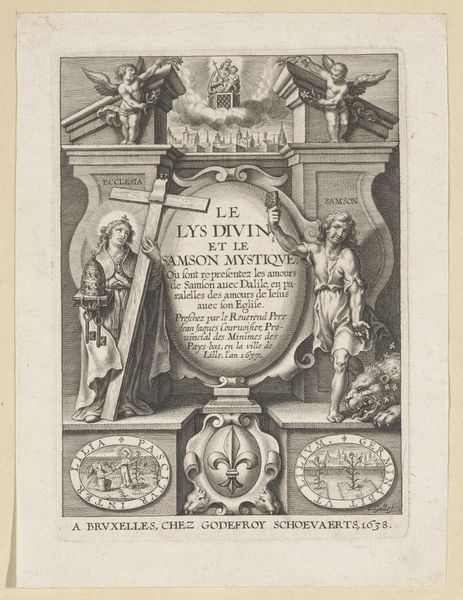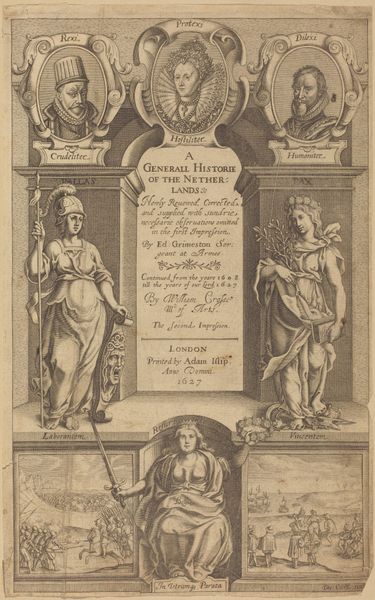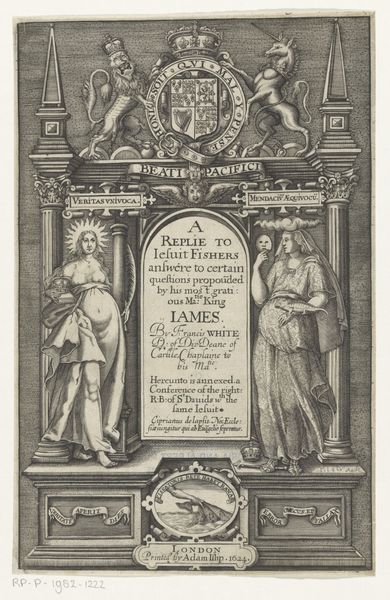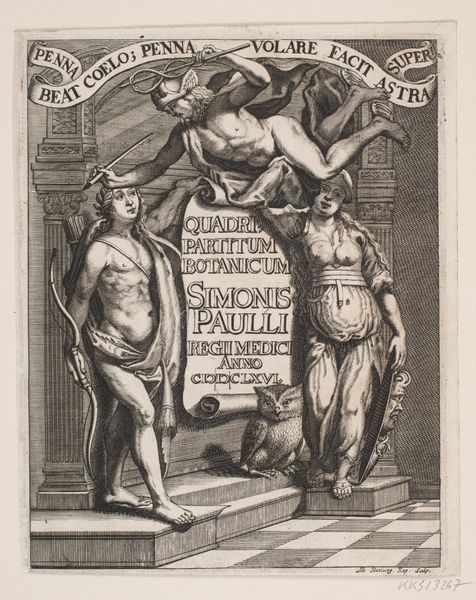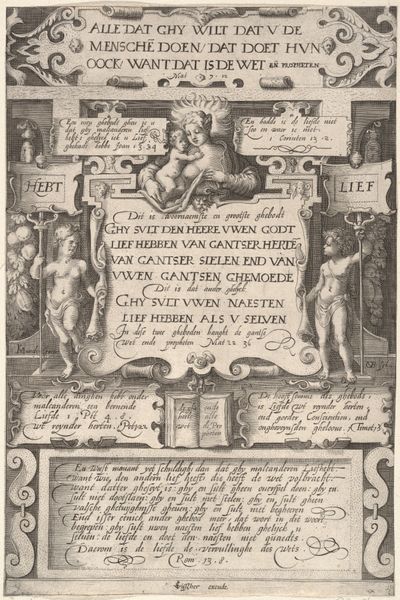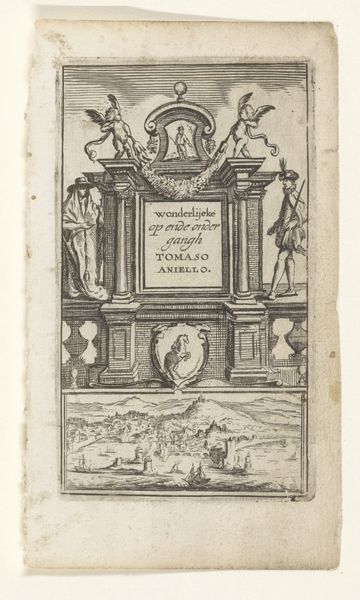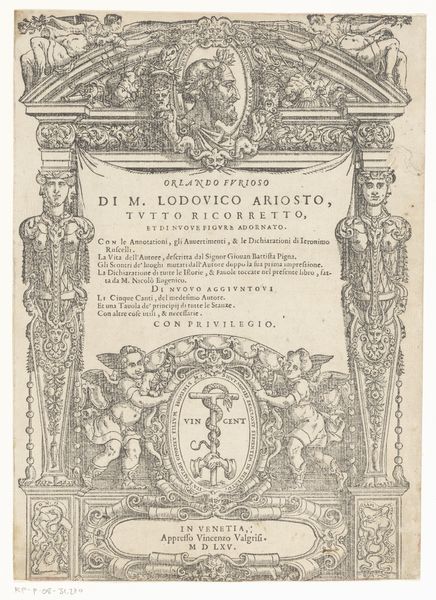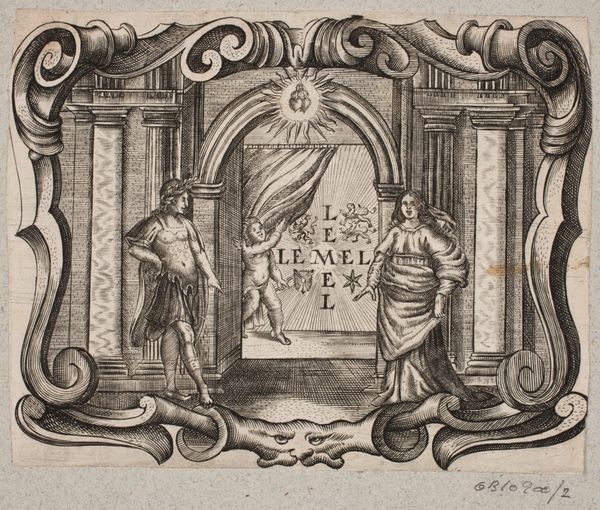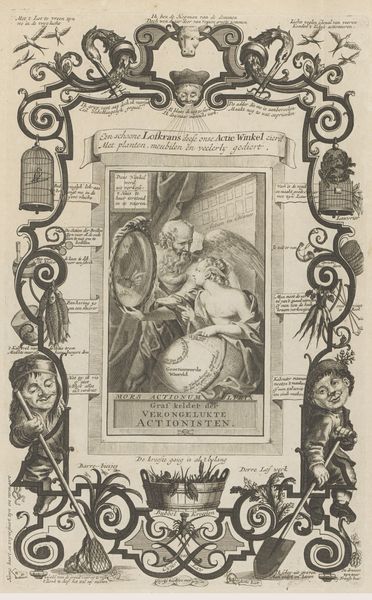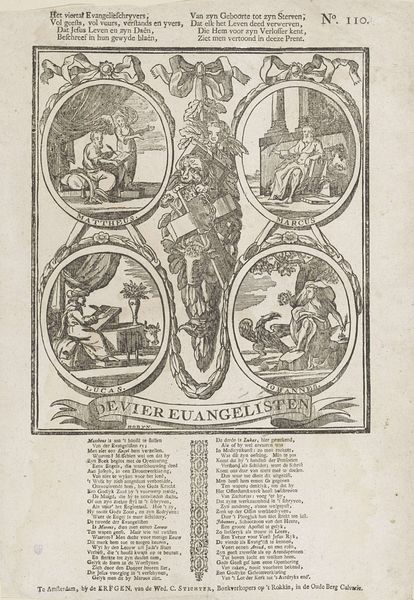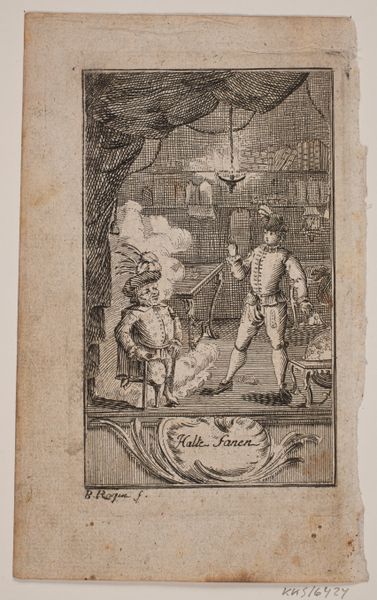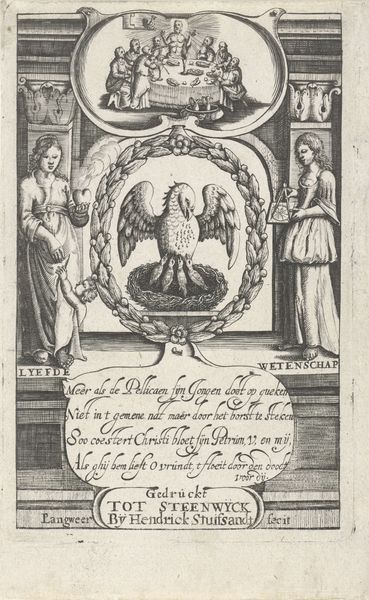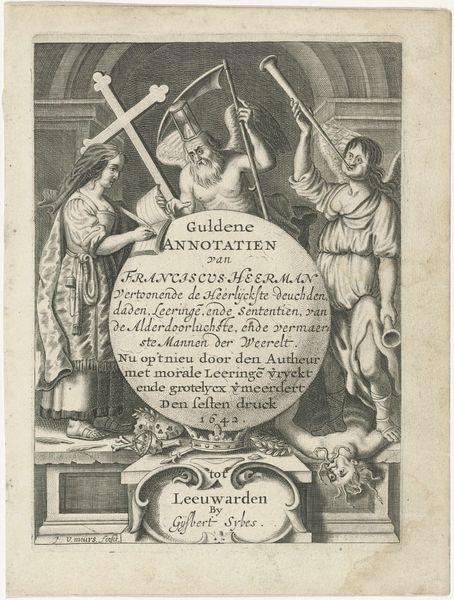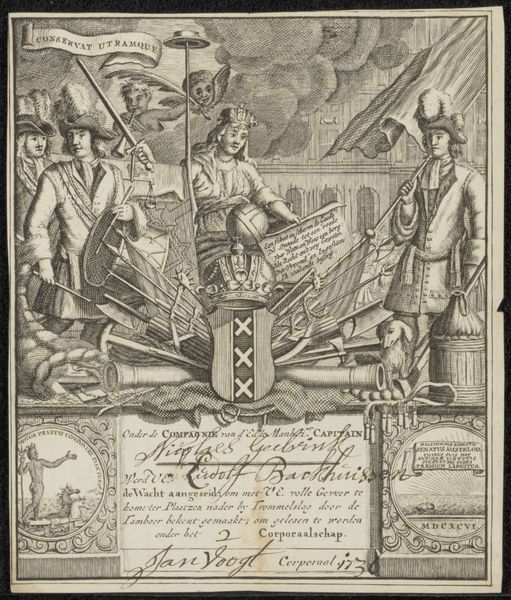
Frontispiece for Peter Heylyn's "The History of St. George of Cappadocia" Possibly 1631
0:00
0:00
print, engraving
#
portrait
#
aged paper
#
toned paper
#
medieval
# print
#
figuration
#
line
#
history-painting
#
engraving
Copyright: National Gallery of Art: CC0 1.0
Curator: We're looking at the frontispiece for Peter Heylyn's "The History of St. George of Cappadocia," possibly engraved in 1631 by Edward Marshall. It's a complex engraving, full of symbolic imagery. Editor: It's quite dense! The contrast of dark lines on the toned paper gives it a powerful, almost overwhelming feel. It looks both decorative and intensely serious. Curator: Exactly. Consider how the figures of the kings, Edward and Charles, frame the composition. They signify royal authority sanctioning the history, linking it to the present monarchical power. St. George himself flanks the title, presented both in military stance—"Georgius Militans"—and in triumphant glory. The choice and position of each figure construct a pro-monarchy argument, deeply embedded in social and religious structures. Editor: Yes, and that dragon at the feet of "Georgius Militans" clearly visualizes St. George's struggle against perceived evil. It almost serves as an allegory for political resistance itself. Curator: Indeed. This image functioned as a persuasive introduction to the text. Even the inscription citing Psalm 116:15—"Right precious in the sight of the Lord is the death of his Saints"—contributes to shaping our understanding of martyrdom and righteousness within this historical narrative. Think about the role it plays in establishing a theological argument for the subject, setting a powerful tone for the narratives contained within. Editor: There's so much here. The precision of the lines, the symbolic layout—everything contributes to a feeling of orchestrated authority. Curator: Ultimately, this isn’t just a title page; it’s a declaration, a statement of political and religious conviction meticulously etched into copper. Editor: Precisely; the composition invites deeper reflection into both theological implications, as well as period aesthetics.
Comments
No comments
Be the first to comment and join the conversation on the ultimate creative platform.
